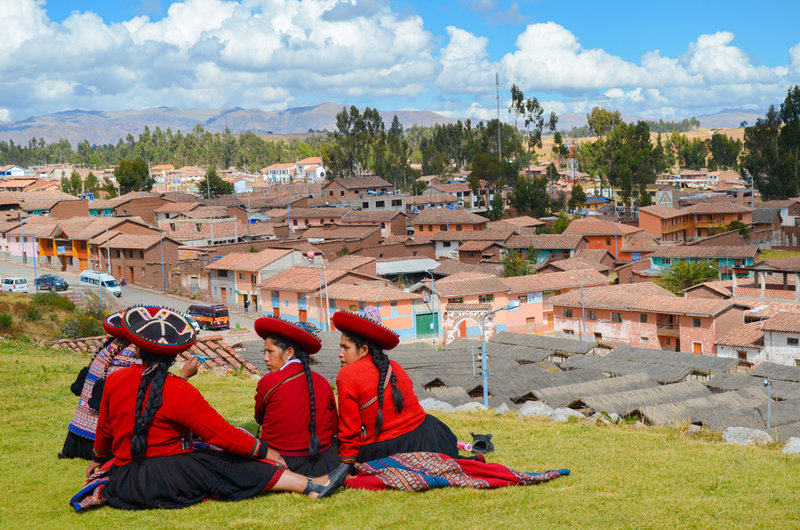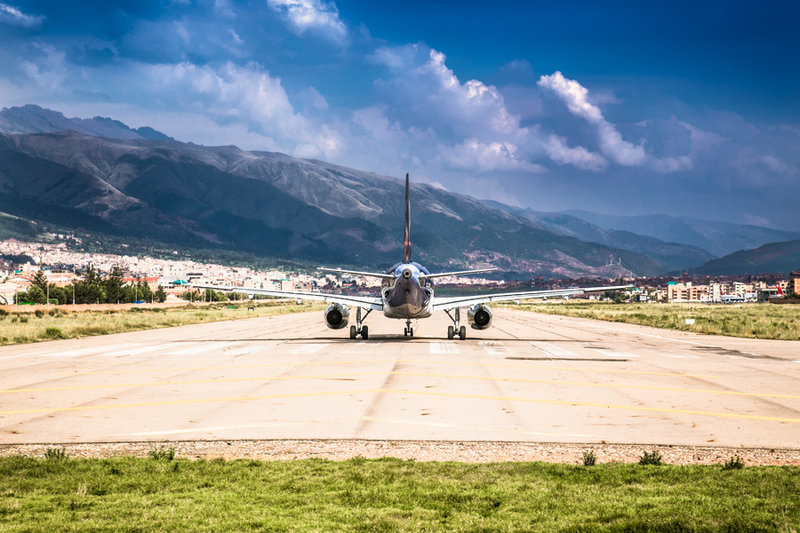Environment
Saving Machu Picchu: will a new airport create problems in Peru?
Work is underway in Peru’s Sacred Valley to build a new airport that will help accommodate growing tourism rates. However, conservationists have warned the hub could be more damaging than beneficial, putting the fate of the Machu Picchu citadel, the area’s most famous attraction, at stake. Adele Berti explores the pros and cons of a new airport in Peru.
The Machu Picchu World Heritage site has been the pillar attraction of the Sacred Valley of the Incas for decades and annually welcomes around 3.5 million visitors from across the globe.
Sitting in the middle of Peru’s Andean highlands, one of the most scenic locations of South America, Machu Picchu is one of many archaeological sites currently threatened by the construction of a new airport, set to be built nearby by 2023.
The issue has been subject to criticism from UNESCO, archaeologists and historians ever since President Martin Vizcarra announced plans to locate the new hub in the village of Chinchero earlier this year.
However, despite a wave of concern and petitions that followed the announcement, the government recently kicked off works in the picturesque Inca village. Due to be completed by 2023, the airport will replace the area’s main hub in Cusco and will feature direct flights to other South American cities and a number of US hubs. A project financed by the Peruvian state, it is expected to reach a capacity of eight million passengers per year and generate millions of dollars of revenues.
Yet according to many, the hub’s flaws – which go far beyond the sole future of heritage sites – are too high a price to pay.
Image courtesy of
Old but gold? Plans date back to the 1970s
Announcing the airport’s construction earlier this year, President Vizcarra told reporters: “There are evaluations and studies that have been done for 15 years. This is not an improvisation. Chinchero Airport is going [ahead].”
However, early proposals for the airport actually date as far back as the 1970s and have been a recurring campaign pledge for several parties throughout the past 40 years.
Advocates claim that the need for a new airport is more urgent than ever, as Cusco’s Alejandro Velasco Astete International Airport is quickly reaching full capacity and has long been outdated, having been built in 1965.

An Airbus A319 taking off from Cusco Airport. Image: Markus Mainka / Shutterstock.com
Yet, according to Mark Rice, author of the book ‘Making Machu Picchu: The Politics of Tourism in Twentieth-Century Peru’, the current proposal, which is largely inspired by its 1970s’ version, lacks originality.
“Because the plans are there, it's easy to start this project,” he says. “But airport design and aviation have changed a lot since the 1970s. So, just in the first objection, this product should have been rethought from the start, instead of dusting off old plans in the 1970s.”
This product should have been rethought from the start, instead of dusting off old plans in the 1970s
The environmental disadvantages of building in Chinchero
Other than allegedly relying on outdated plans, the airport is also likely to have a large impact on the surrounding area, which itself is a threat to the success of the operations.
“There are a number of reasons that make the projected airport dangerous and altogether unviable,” says Dr Gabriela Ramos, senior lecturer in Latin American History at the University of Cambridge. “Due to its altitude – over 10,000ft above sea level – the location is surrounded by mountains that are higher than 5,000m.
“Since the 1980s, there have been reports produced by aviation experts that have ruled out the airport project because of safety reasons. Human lives are threatened as well, and the aviation industry should be aware of this.”
Adding to this, construction is already turning land traditionally used for agriculture into concrete ground, obstructing the nearby lakes and wetlands.
“Presently, Machu Picchu receives a larger number [of visitors] than reasonable,” Ramos continues, referring to the fact that the number of daily visitors allowed is already almost double the amount UNESCO recommends, at 4,000 instead of 2,500.
“So, building an airport to receive three or four times more tourists is contradictory and threatens the preservation of the place. Turning Machu Picchu into a theme park will lead Cuzco and its surroundings to deteriorate,” she adds.

Native Cusquena women dressed in traditional colourful clothing. Image: Cristina Stoian / Shutterstock.com
Rice explains that these factors were ignored in previous environmental reviews, which were done on behalf of the government and therefore are at fault of “a certain institutional bias” that inevitably favours the airport.
In addition, Peruvian archaeologist Arturo Rivera Infante warns that the hub will trigger the creation of “a land of urbanisation around it” that will include car parks, hotels and recreational areas.
“But the government is doing nothing to protect the surrounding area from them, failing to ensure that there is enough attention on the archaeological sites like Chinchero and Machu Picchu,” he points out.
Since the 1980s, there have been reports produced by aviation experts that have ruled out the airport project because of safety reasons
A divided population
Outrage was sparked all around the world when the airport received the green light.
UNESCO sent a letter to the government, urging it to reconsider the plan, and reminding it of the damage it risked causing. In October this year, the Sacred Valley was also included among the World Monuments Fund's list of 25 cultural heritage sites at risk.
Meanwhile, a petition launched by Natalia Majluf, director of the Museo de Arte de Lima, reached almost 95,000 signatures, including those of Ramos and Rice.
A missing voice amid this dissent is that of Cusco and Chinchero locals, many of whom seem divided between their attachment to the land and the prospect of new economic opportunities.

An aircraft prepares to take off in Cusco.
“Airport building has irremediably damaged indigenous people’s property rights and key features of their traditional way of life,” says Ramos, explaining that many communities have been offered large sums of money to leave the area and will now have to start their small businesses elsewhere.
Nevertheless, adds Rice, the plan has been largely welcomed by the people in Cusco. “We haven't seen, unfortunately, a big groundswell of local activism against the airport,” he says.
He adds that, despite its ancient origins, “Cusco has actually always been a rather globalised site. So, most of the people are agrarian people but they also are pretty rational economic actors, and their immediate reaction has been favourable.”
In addition, the arrival of the airport is being seen as a symbolic victory for the city of Cusco, which has long-standing political tensions with Lima. “There's a lot of resentment on the part of Cuscanians that they are doing the work and the labour of tourism, which ultimately benefits investors and the government in Lima,” Rice explains. “So, this airport is seen as something that has been owned to them since the 1970s.”
The arrival of the airport is being seen as a symbolic victory for the city of Cusco
Will the airport ever reach completion?
“If the region needs an airport, it would have to be built elsewhere” with or without the locals’ approval, says Ramos.
But given the region’s mountainous landscape, it’s not easy to find a suitable alternative location.
For this reason, Rice suggests expanding the current airport in Cusco would be a reasonable compromise. As he puts it, “the government should really be looking at ways to build a new terminal or expand operations in the current form”.
However, with work already underway, it seems that 40 years after the initial proposals, Chinchero will eventually have its own airport.
“At the end of the process, Peruvians will ultimately be disappointed with an airport that does not deliver the economic bonanza that some people think it will and in the long run,” says Rice.
“In a perfect world, the contractors would step up and fill in the gap, but I think we all know that that's just not going to happen.
“So, it's the responsibility of governments and communities to insist that these parameters are filled. And unfortunately, right now, the Peruvian Government is not doing that.”
The government should really be looking at ways to build a new terminal or expand operations in the current form